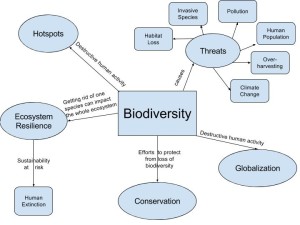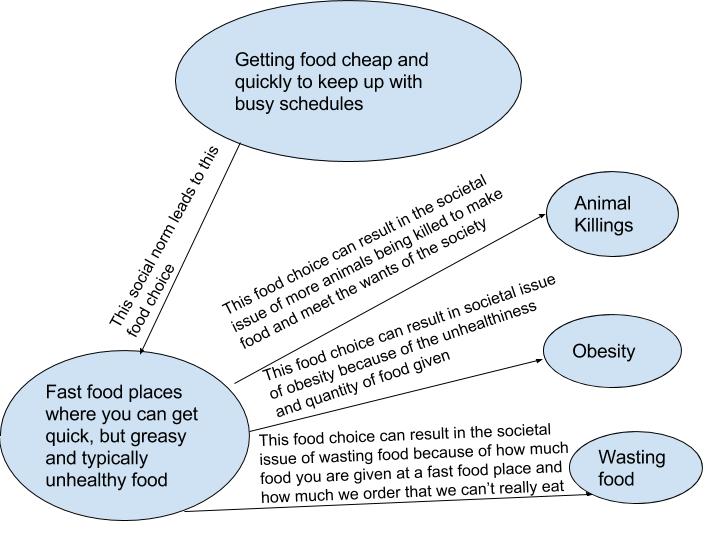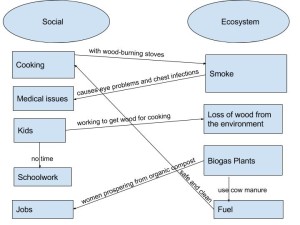- In this module, there are many different factors that are addressed that can connect to biodiversity – many of which we have discussed in previous modules. Create a system diagram connecting biodiversity to the other things discussed in the module that you find most important.
2. In 150-250 words, briefly describe the overview of your diagram.
In my diagram, what I decided to do overall was to put “Biodiversity” in the center and put the biggest points from the module going off of it. The biggest ones were hotspots, threats that biodiversity can bring about, globalization, conservation efforts to protect from loss of biodiversity, and ecosystem resilience. Many of these things are brought about by the destructive actions of the human population. This, however, is ironic because these destructive human actions can lead back to the potential extinction of humans. I addressed this in the diagram through ecosystem resilience. This describes how if one species is eliminated, it can affect the whole ecosystem, even if it’s just a little bit. Biodiversity can also pose a lot of threats to the environment. The main ones include habitat loss, invasive species, pollution, human population, overharvesting, and climate change. And to conclude, since biodiversity loss is such a huge problem, there needs to be conservation efforts to help prevent from this loss.
3. In this module, there are many connections to how humans can have an impact on the environment. These actions can have potentially damaging effects on the species in the environment. In 150-250 words, describe what actions you can take in your own life to help prevent the loss of biodiversity.
After going through this whole course, it seems to be a pretty recurring theme that our actions as human beings can play an extremely crucial role in the health and stability of the environment and world that surrounds us. With this being said, we need to be very aware of our actions and how we could be affecting the world. Even if we can’t always see the consequences of our actions face to face every day, that doesn’t mean that they are not happening. Biodiversity is one of those things that could be greatly affected by our actions. The threat that biodiversity can face that really stuck out to me as being cause by human actions was pollution. So many people, myself included, are adding to the problem of pollution, sometimes without even knowing it. One example of a way that I can help reduce pollution in my own life would be to cut down on the amount of times that I drive my car. Luckily, being at school is nice because I can walk almost everywhere that I need to go, which cuts down on the emissions being released by cars; however, when I’m home, I should really try to walk more places, carpool, or use more public transportation. In addition to that, I can recycle more often. I do recycle a good amount, but definitely not enough, and only really when it’s convenient. I should make a conscious effort to recycle always.




